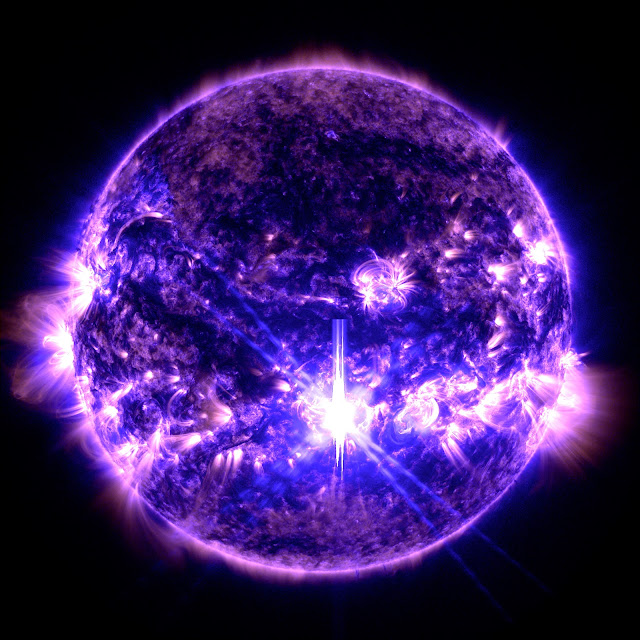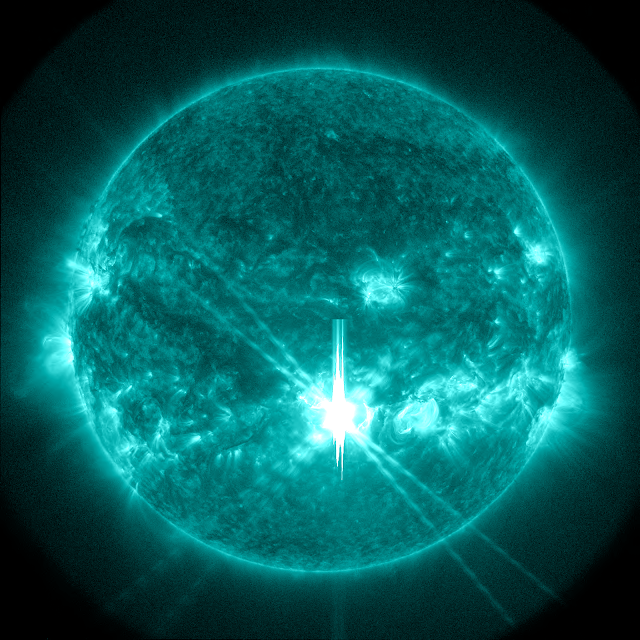Pan of Star Cluster Westerlund 1 in Ara | James Webb Space Telescope
The unique draw of Westerlund 1 is its large, dense, and diverse population of massive stars, which has no counterpart in other known Milky Way galaxy clusters in terms of the number of stars and the richness of spectral types and evolutionary phases. All stars identified in this cluster are evolved and very massive, spanning the full range of stellar classifications including Wolf-Rayet stars, OB supergiants, yellow hypergiants (nearly as bright as a million Suns) and luminous blue variables. Because such stars have a rather short life, Westerlund 1 is very young, astronomically speaking. Astronomers estimate the cluster’s age to be somewhere between 3.5 and 5 million years (its exact age is still a matter of debate), making it a newborn cluster in our galaxy. In the future, it is believed that it will likely evolve from an open cluster into a globular cluster. These are roughly spherical, tightly packed collections of old stars bound together by gravity.
Currently, only a handful of stars form in our galaxy each year, but in the past the situation was different. The Milky Way galaxy used to produce many more stars, likely hitting its peak of churning out dozens or hundreds of stars per year about 10 billion years ago and then gradually declining ever since. Astronomers think that most of this star formation took place in massive clusters of stars, known as “super star clusters”. These are young clusters of stars that contain more than 10,000 times the mass of the Sun, packed into an unbelievably small volume. They represent the most extreme environments in which stars and planets can form. Only a few super star clusters still exist in our galaxy—Westerlund 1 is one—but they offer important clues about this earlier era when most of our galaxy’s stars formed.
Westerlund 1 is an impressive example of a super star cluster: it contains hundreds of very massive stars, a number shining with a brilliance of almost one million Suns and others two thousand times larger than the Sun (as large as the orbit of Saturn). Indeed, if the Solar System was located at the heart of this remarkable cluster, our sky would be full of hundreds of stars as bright as the full Moon. It appears to be the most massive compact young cluster yet identified in the Milky Way galaxy: astronomers believe that this extreme cluster contains between 50,000 and 100,000 times the mass of the Sun, yet all of its stars are located within a region less than six light-years across. Even so, it is the biggest of these remaining super star clusters in the Milky Way galaxy, and the closest super star cluster to Earth. These qualities make Westerlund 1 an excellent target for studying the impact of a super star cluster’s environment on the formation process of stars and planets, as well as the evolution of stars over a broad range of masses.
The huge population of massive stars in Westerlund 1 suggests that it will have a very significant impact on its surroundings. The cluster contains so many massive stars that in a time span of less than 40 million years, it will be the site of more than 1,500 supernovae. This super star cluster now provides astronomers with a unique perspective towards one of the most extreme environments in the Universe. Westerlund 1 will certainly provide new opportunities in the long-standing quest for more and finer details about how stars, and especially massive stars, form.
This image was captured as part of the The Extended Westerlund 1 and 2 Open Clusters Survey (EWOCS) with Webb’s Near-InfraRed Camera (NIRCam). This survey is a dedicated Webb program (GO 1905, PI: M. G. Guarcello) that aims to study star and planet formation and stellar evolution in starburst regions in Westerlund 1 and Westerlund 2, two of the closest super star clusters to the Sun.
With its unparalleled performance in the infrared, Webb offers astronomers the opportunity to unveil the population of low-mass stars in local super star clusters for the first time, and to study the environments around these clusters’ most massive stars. Webb observations of the massive stars in super star clusters can shed light on how feedback (stellar winds, supernovae and other ejected material) from these stars impacts their surrounding environments and the overall star formation process within their parental clouds.
Image Description: A dense cluster of bright stars, each with six large and two small diffraction spikes, due to the telescope’s optics. They have a variety of sizes depending on their brightness and distance from us in the cluster, and different colors reflecting different types of star. Patches of billowing red gas can be seen in and around the cluster, lit up by the stars. Small stars in the cluster blend into a background of distant stars and galaxies on black.
Video Credit: European Space Agency/Webb, NASA & Canadian Space Agency, M. Zamani (ESA/Webb), M. G. Guarcello (INAF-OAPA) and the EWOCS team, N. Bartmann (ESA/Webb)
Duration: 45 seconds
Release Date: Oct. 4, 2024
#NASA #ESA #Astronomy #Space #Science #StarClusters #Westerlund1 #StarCluster #Stars #HypergiantStars #RedSupergiants #Ara #Constellation #MilkyWayGalaxy #Universe #JWST #SpaceTelescope #STScI #GSFC #UnitedStates #Europe #CSA #Canada #STEM #Education #HD #Video
















